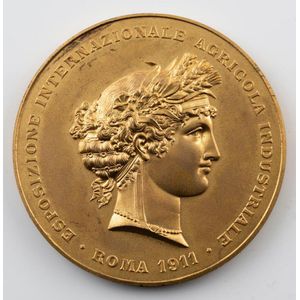1930 Pearl and Diamond Brooch
You must be a subscriber, and be logged in to view price and dealer details.
Subscribe Now to view actual auction price for this item
When you subscribe, you have the option of setting the currency in which to display prices to $Au, $US, $NZ or Stg.
- Circa - A Latin term meaning 'about', often used in the antique trade to give an approximate date for the piece, usually considered to be five years on either side of the circa year. Thus, circa 1900 means the piece was made about 1900, probably between 1895 and 1905. The expression is sometimes abbreviated to c.1900.
- Millegrain - A type of jewellery setting where the stone is held is held in position by small adjacent beads of metal. This method of securing the stone was popular in the 19th century.
- Foliate - Decorated with leaves or leaf-like forms.
- Openwork in Jewellery - Openwork, also known as pierced work, is a decorative technique used in jewellery making that involves removing or cutting out sections of metal from a piece of jewellery to create a pattern or design. This technique can be used in a wide range of jewellery styles, including necklaces, bracelets, earrings, and rings.
Openwork jewellery can be made using a variety of different techniques, including hand carving, sawing, and laser cutting. The design can be simple or complex, and can feature a range of different shapes and motifs, from delicate floral patterns to bold geometric designs.
One of the advantages of openwork jewellery is that it can add visual interest and depth to a piece without adding a lot of weight or bulk. This can be particularly appealing in larger pieces, such as necklaces and bracelets, where heavy materials can be uncomfortable to wear.
This item has been included into following indexes:
Visually similar items

Pearl and diamond brooch, circa 1930 centring a pearl flanked by old European-cut diamonds within an openwork pierced and millegrain surround of foliate and scroll design highlighted with circular-cut diamonds, mounted in platinum, approximately 43 x 19 mm

J Campbell majolica deep plate with moulded decoration, signed J Campbell Tasmania.30 cm diameter

Silvered Bronze medals (2) by Louis Bottee (63 mm, 109g.) the first awarded to 'Charles Lameire', the second to 'Mongruel'.

Three medals Exposicion Internacional De Barcelona, 1929, a gilt metal medal by H.Parera. In original brown leatherette case (4.9 cm) To be sold with Esposizione Internazionale Agricola Industriale Roma, 1911, a gilt bronze medal (6 cm) Also Exposicion Uni
